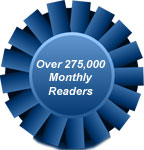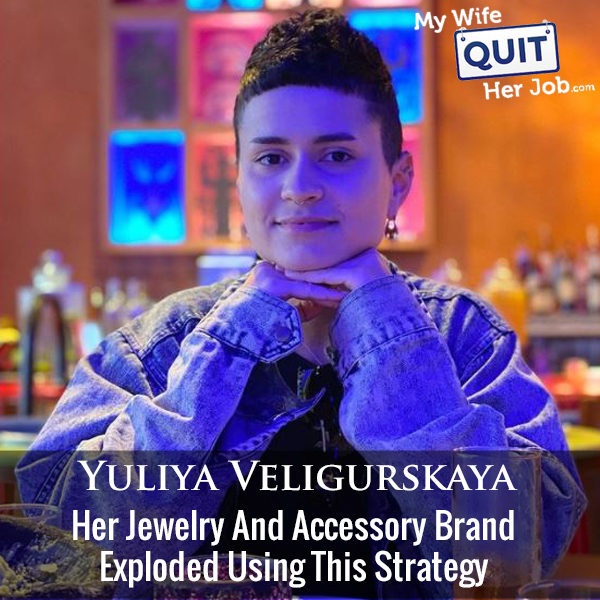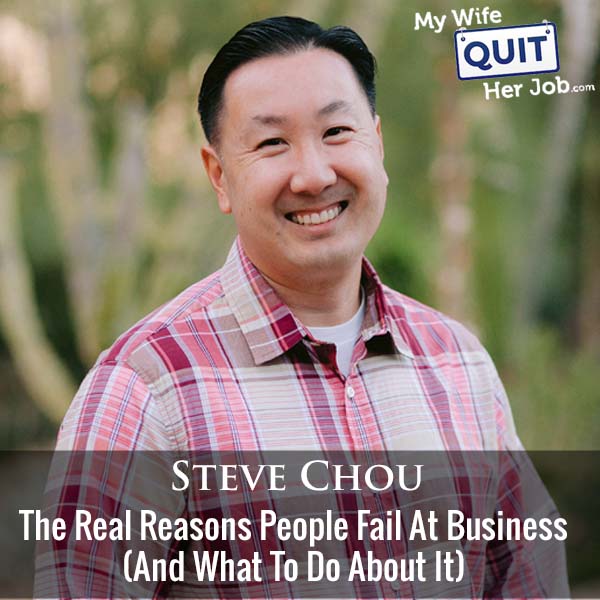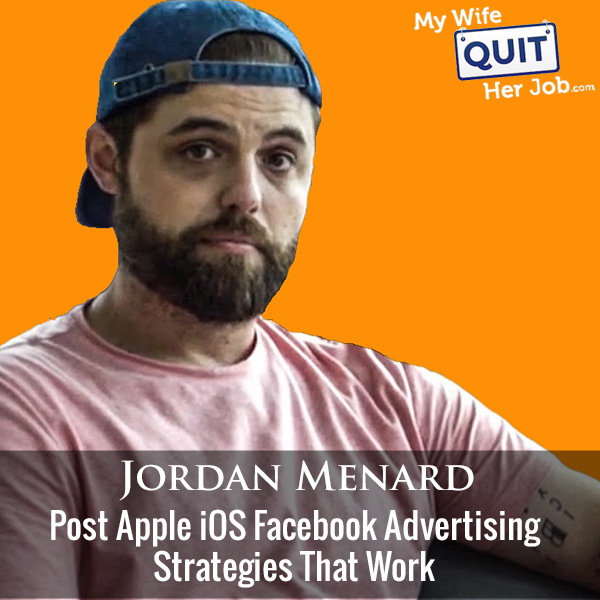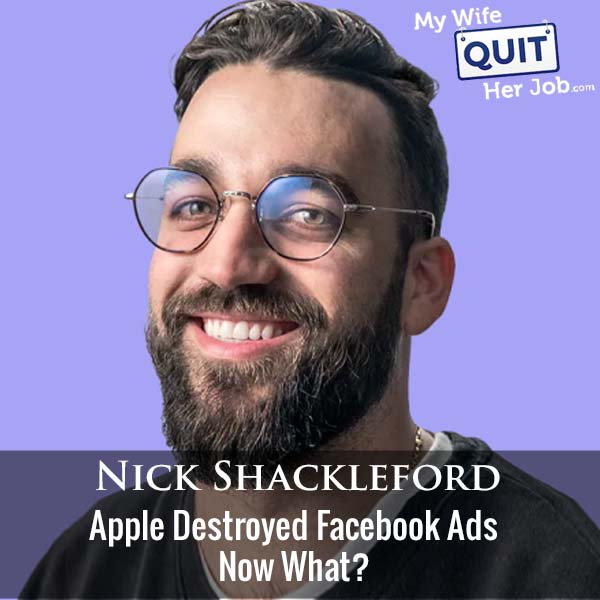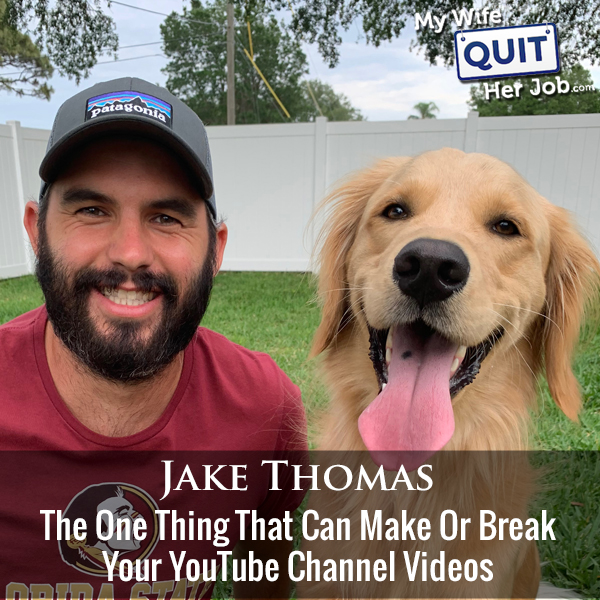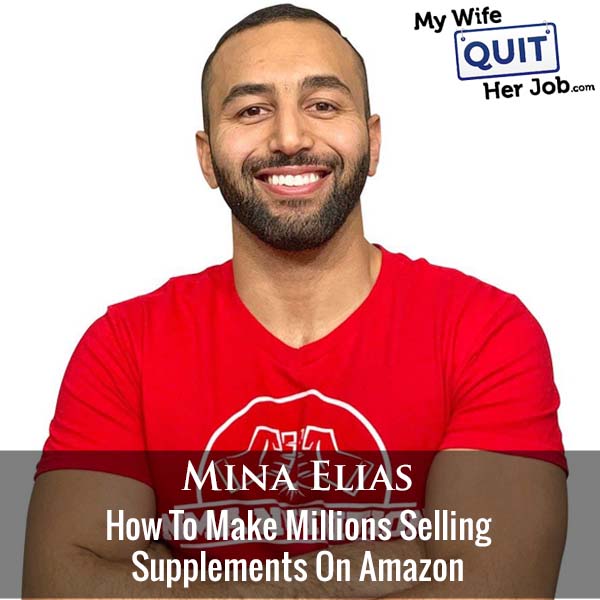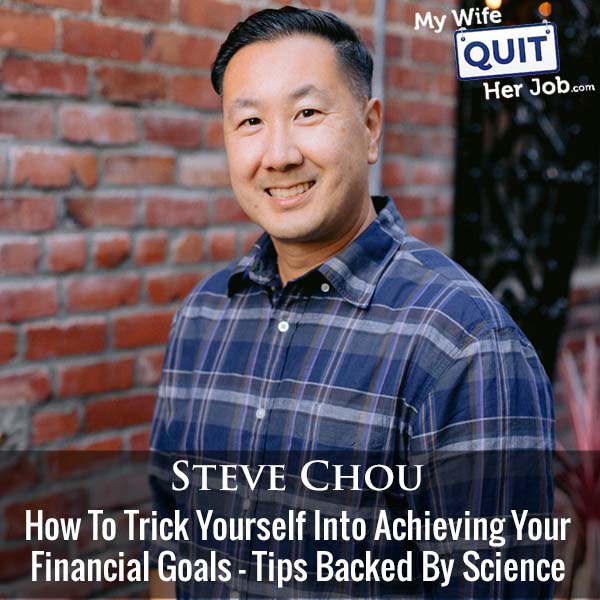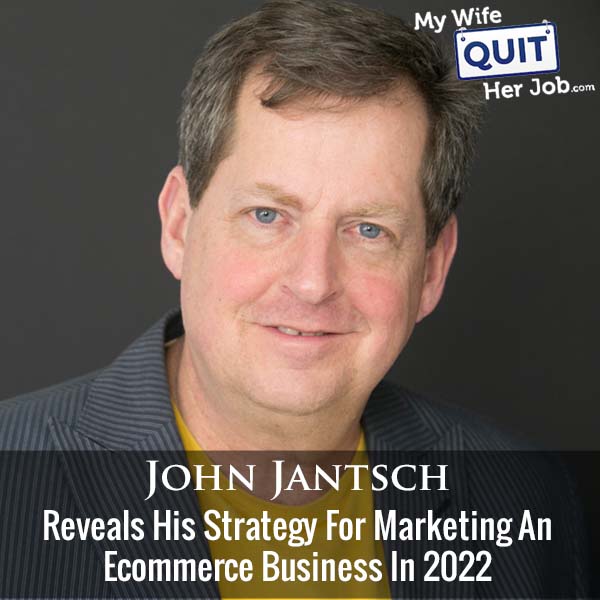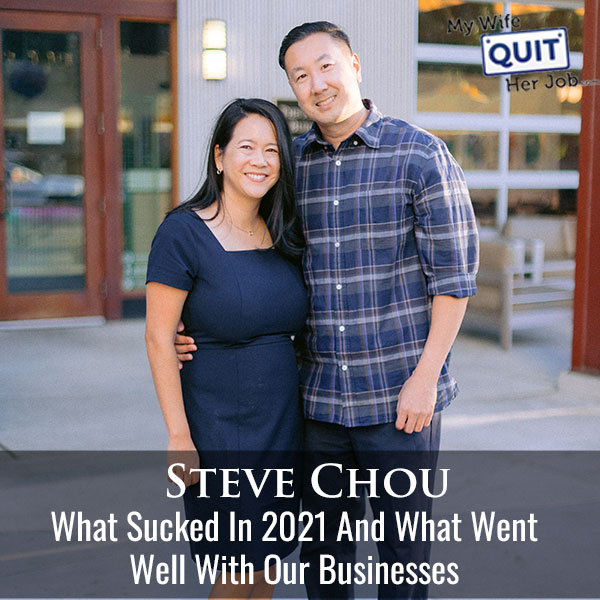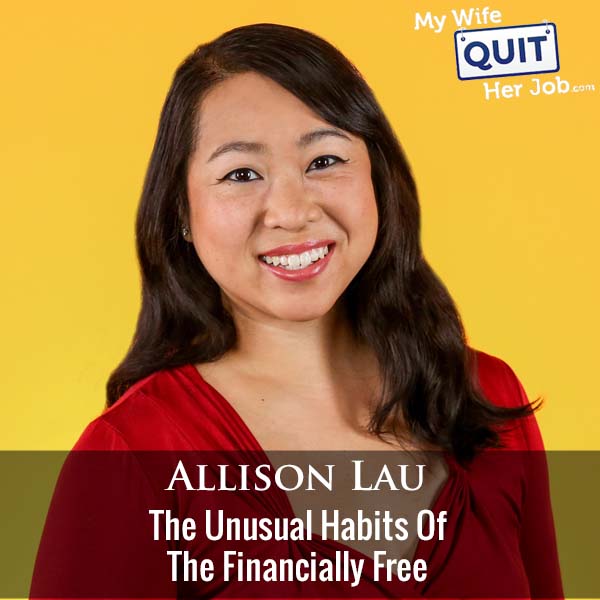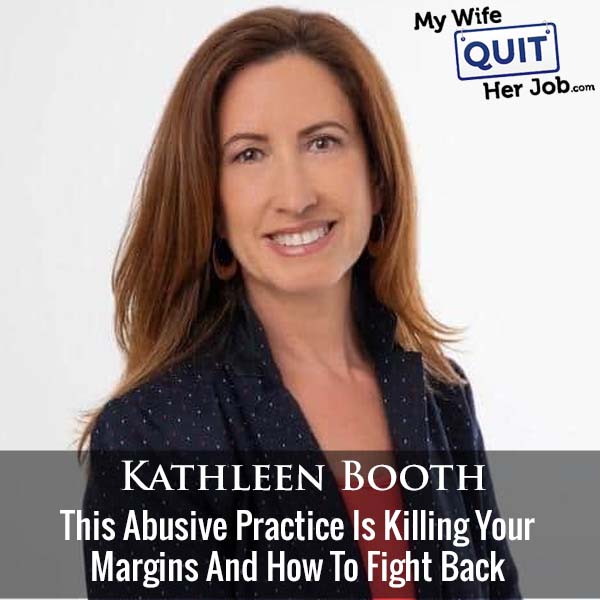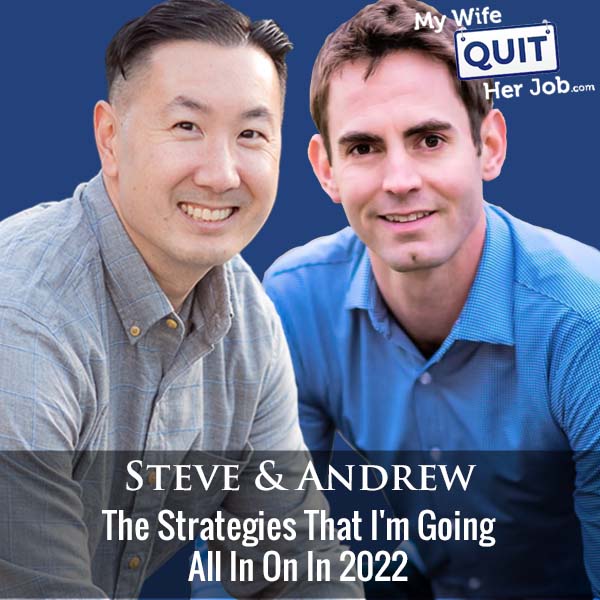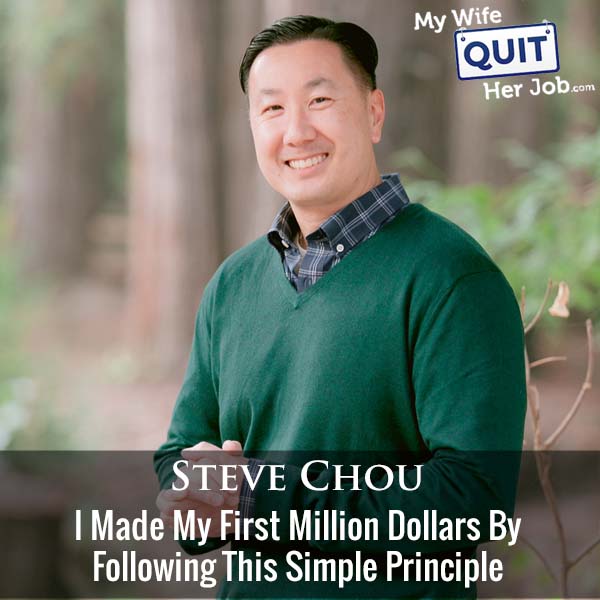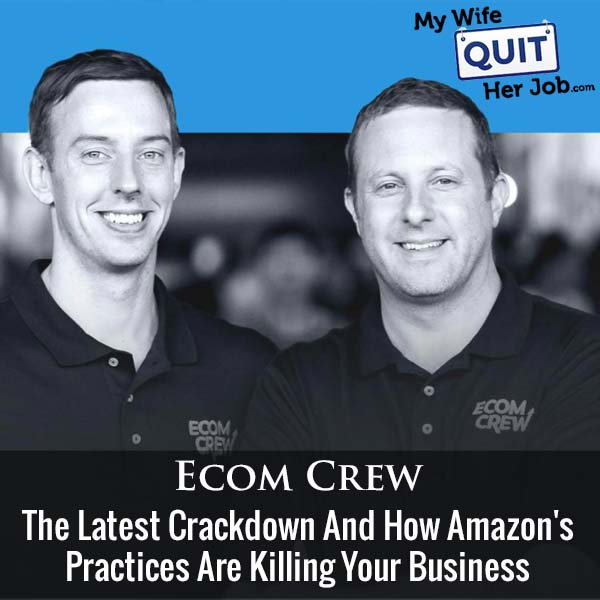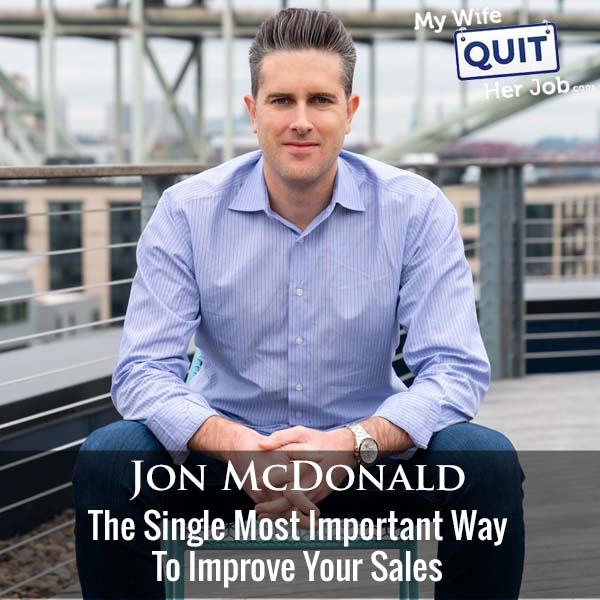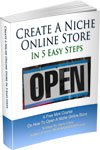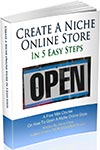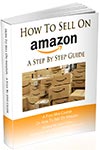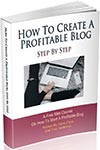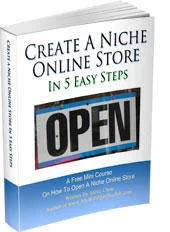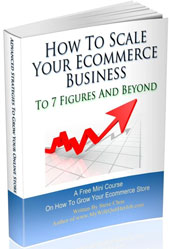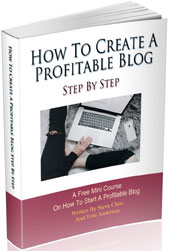Podcast: Download (Duration: 55:08 — 63.4MB)
I’m really excited to have Yuliya Veligurskaya on the show. Yuliya is a student in my Create A Profitable Online Store course and she runs a near 7 figure brand selling unique jewelry, bags, and accessories over at StudioCult.co.
Even though jewelry, bags, and accessories are one of the hardest products to sell online, Yuliya has managed to create a successful ecommerce business without selling on Amazon.
In this episode, you’ll learn how she created her brand with TikTok and Instagram.
What You’ll Learn
- How to build a successful brand without much paid advertising
- The biggest challenges you’ll encounter selling into a saturated category
- How to generate sales using Tiktok and Instagram
Other Resources And Books
Sponsors
Postscript.io – Postscript.io is the SMS marketing platform that I personally use for my ecommerce store. Postscript specializes in ecommerce and is by far the simplest and easiest text message marketing platform that I’ve used and it’s reasonably priced. Click here and try Postscript for FREE.
Klaviyo.com – Klaviyo is the email marketing platform that I personally use for my ecommerce store. Created specifically for ecommerce, it is the best email marketing provider that I’ve used to date. Click here and try Klaviyo for FREE.
EmergeCounsel.com – EmergeCounsel is the service I use for trademarks and to get advice on any issue related to intellectual property protection. Click here and get $100 OFF by mentioning the My Wife Quit Her Job podcast.
Transcript
You’re listening to the My Wipe Cooder Job podcast, the place where I bring on successful bootstrap business owners and delve deeply into the strategies they use to grow their businesses. And today we’re kicking off week one of student month, where I’m going to bring in successful students from my class to talk about their businesses. And my first guest to kick off this series is Yulia Villegascaia. Now Yulia runs studiocult.co where she sells jewelry, handbags and accessories, which is probably among the hardest types of physical goods to sell online.
00:30
since those niches are so competitive. But Julia has created a successful business and we’re gonna find out exactly how she did it. But before we begin, I wanna thank Postscript for sponsoring this episode. Postscript is my SMS or text messaging provider that I use for e-commerce and it’s crushing it for me. I never thought that people would want marketing text messages, but it works. In fact, my tiny SMS list is performing on par with my email list, which is easily 10X bigger. Anyway, Postscript specializes in text message marketing for e-commerce.
00:58
and you can segment your audience just like email. It’s an inexpensive solution, converts like crazy, and you can try it for free over at postscript.io slash div. That’s P-O-S-T-S-U-I-P-T dot I-O slash div. I also want to thank Klaviyo for sponsoring this episode, and I’m always super excited to talk about Klaviyo because they’re the email marketing platform that I personally use from my eCommerce store, and it depends on them for over 30 % of my revenue. Now you’re probably wondering why Klaviyo and not another provider.
01:24
Well, Klaviyo is the only email platform out there that is specifically built for e-commerce stores, and here’s why it’s so powerful. Klaviyo can track every single customer who has shopped in your store and exactly what they bought. So let’s say I want to send an email to everyone who purchased a red handkerchief in the last week. Easy. Let’s say I want to set up a special autoresponder sequence to my customers depending on what they bought, piece of cake, and there’s full revenue tracking on every email sent. Now Klaviyo is the most powerful email platform that I’ve ever used, and you can try them for free over at klaviyo.com slash mywife.
01:54
That’s KLAVIO.com slash my wife. And then finally, I wanted to mention my other podcast that I released with my partner, Tony. And unlike this podcast where I interview successful entrepreneurs in e-commerce, the profitable audience podcast covers all things related to content creation and building an audience. No topic is off the table and we tell like how it is in a run entertaining way. So be sure to check out the profitable audience podcast on your favorite podcast app. Now onto the show.
02:25
Welcome to the My Wife, Quarter Job podcast. Today I’m really happy to have Yulia Villegas-Gaya on the show. Now, Yulia is a student in my Creator Profitable Online Store course, and she runs a near seven-figure brand selling unique jewelry, bags, and accessories over at studiocult.co. Now, I’ve said this before, jewelry, bags, and accessories is actually one of the hardest products to sell online because the internet is flooded with jewelry, handbags, and accessories. And in general, these categories are quite saturated.
02:55
But Yulia has managed to create a great brand over at Studio Cult. And actually, if you see her jewelry, you’ll immediately understand why. And I encourage you guys to just go to her site and check out her stuff. Now, Yulia does not sell on Amazon, and all of her sales are from her own site. And I decided to bring her on the show to tell her story and reveal how she has managed to build a successful jewelry and accessory brand with just TikTok and Instagram. And Yulia, welcome to the show. So happy to have you.
03:23
Thanks for having me on. I’m really excited to talk to you about my business. Yeah, Julia, tell the audience about your business, what you sell and how you got started. Yeah, so it started as a passion project while I after I quit my job, I used to work in architecture and I live with my mother for a little bit and I was trying to reorient myself because I wasn’t really jazzed about my previous career. I used to work in architecture.
03:49
And I wanted to do something that was more freeing for my career. I felt like I was very stifled and what I was doing before. So, yeah, I was browsing the internet. I was taking your course. I was really just totally committed to starting my own business because I couldn’t really find any jobs where that would be either a call me back for when I submitted a application for the job or just
04:16
There’s just not really much interesting work to be had. I knew that I had to forward to my own way. I found a, uh, uh, community of people who made these things called like enamel pins. are these little brooches basically put them on your backpack, you can put them on your jacket. And, um, I noticed that there were like big brands and small brands making them like everyone from H &M to like, you know, you’re like Instagram artists, like 18 year old Instagram artists. So.
04:42
I’m like, could probably make one of these. I did a bunch of research and I studied the community for a month and I got to this conclusion where I’m like, I know exactly what is the perfect pin to make. And I made it. And then I, you know, did a whole like launch process. found people to send it to, uh, that would post about it. It was a pretty, um, detailed plan I put together and it was actually an overnight success. I like it wasn’t viral.
05:12
overnight. It’s kind of crazy. But before that, I actually had a business that fell apart to where I was importing tea kettles from China to the US and selling them on Amazon. So it wasn’t entirely an overnight success story. But that product was I’m curious about this pin. Can you describe it? Yeah. So if you Google msp enamel pin, it’ll come up. And basically what it is is a
05:40
pin that looks like a three dimensional version of the program and that’s paint. And it had like a dry erase surface. So you can actually like write your name on it and use it as a name tag. And yeah, the way that I got to the idea was actually like, I was looking at the product. I’m like, why are people buying these little things? Like I never actually cared about pins before, but I found them to be these really like beautiful objects. Like I could see myself collecting them. And I realized that
06:09
people really valued things like the amount of detail, the amount of colors used, if there was some significant cultural or pop cultural reference. everything kind of came together in my mind, I guess maybe after years of practicing design and being able to synthesize these types of things. to me, it just became blatantly obvious, I need to make MS Paint as a pin. it just, yeah, it blew up overnight.
06:37
Who bought them? Like what was your audience? People who collected pins. So at the time, yeah, at the time, this was in 2017. And Instagram was a bit different back then. It was much easier to just reach your audience on there. I’m sure you kind of heard over time how like the algorithm changes. lot of people, a lot of like small creators have really been in a lot of pain trying to grow their audience on there.
07:07
But at the time it was a lot easier. More people would see your content. I can’t really explain to you technically how it changed, but it’s just kind of like a known fact at this point, right? Sure. So yeah. So yeah, it was mostly pin collectors, but then also when it did go viral, I think it was just anyone who had this nostalgic kind of connection to old technology or they had the memory of, you know, as a child or as a teenager playing on that program.
07:36
It is for some reason MS Paint is like this. There’s an article about it that described MS Paint as the crappy. What was it? was like crappy program for making like lovable art or something like that. I don’t remember. Yeah. So I think that was the appeal to it for like an average person. Well, how did you spark the viality? Did you just literally post it on Instagram and it just took off or? So what happened was
08:06
I did do a lot of research, like I said, into like what made a good pin. So I think that’s really what propped it up. Like it was poised to have success as just like a product, right? But the other thing that I did was I really understood the community and I understood where people who were looking to buy pins hung out. And at that time in 2017, pin post accounts were a big thing. So like anytime there was anything cool coming out in the community.
08:33
these accounts that had like, I don’t know, two or 300,000 followers of posts about it. So I sent, I like paid them like a, like a influencer fee. They have like rates for how much a repost costs. And I think I paid off like, I don’t know, like five to eight accounts to repost it. And, um, that’s when it went viral because they have all posted the same day and just like people, they really resonated with it. And, um,
09:01
Yeah, I don’t think it would have gone viral had I not went through those channels. Okay, so you did the research, you figured out who these influencers were, you did the research on the pin, and you created a great product that you knew had had viral potential, and then it just took off from there. Yeah, yeah, I mean, it was one of like, one of the most unforgettable like moments of my life, because I went from having like, just like a kind of like a
09:28
It was a really crappy store. There was nothing really. I had just the listing of the one pin, a really weird banner I created. It was kind of laughable, really. And I remember my phone was on my desk, just buzzing, buzzing, buzzing, order after order. I think I made 10 grand in a night, on my first night. Wow, that’s awesome. So Yulia, how much did you invest in your initial inventory for these pins? Presumably you didn’t know that it was going to be an overnight success,
09:58
No, I honestly had no idea. think that I must have spent, I don’t remember the exact number, but something between $500 and like $800. And this is after my first business fell apart. So that I invested more than 10 grand into. Right. Okay. So for these pins though, you said you made 10,000 overnight. Presumably you had to take back orders for that then, right? Or were the margins just that good?
10:25
The oh so that was yeah revenue. I mean the margins are also really good on pins. So like I noticed when it comes to like fashion hard goods like sunglasses or jewelry pins the margins are very big like sometimes you can have margins of like 90 depending on what it is. So yeah most of it was profit. So okay so that that initial 800 order was enough to fulfill that first day’s worth of orders?
10:54
Yes. Wow, that’s incredible. Okay. I noticed do you still sell those pins today or? Oh, I stopped selling them mostly because I just wanted to do something more interesting. I wanted to evolve as a designer and I felt like it making pins is kind of keeping me back. Right. Okay. Can I just ask you questions about your background? You were an architect before not a jewelry or pin designer.
11:23
Yeah, yeah, exactly. Did any of skills translate? And do you design all your own stuff today? Yeah, actually, it translated beautifully. What’s really funny is that the software that we use in school to 3d model our buildings, it’s called Rhinoceros 3d actually was originally developed as a jewelry program. So yes, yeah, so it was kind of a flawless transition. Like I still like I learned how to make draftings of buildings. Now I make draftings of jewelry and hand
11:53
It’s like it couldn’t have been like a more opportune situation. So in terms of manufacturing, do you get your stuff produced in the US? No, so I mostly I mostly produce my jewelry overseas. Our fine jewelry is made in India and our the rest of like the fashion jewelry like stainless steel or acrylic or anything that’s made in China. And honestly, it’s kind of hard to
12:22
get things manufactured in the United States, you get much better service overseas. Like if you want to get something made in the United States, you have to like, let’s say you want to make a ring, right? You have to, depending on how you make it, you have to make a wax. In order to make the wax, you can go to a caster, they can probably print it and then they will cast it for you to create the metal. And then if you want to go set a stone into it, you have to go to another person and set a stone. If you want to do some other kind of process to it, have to
12:52
find that guy for that process. But overseas, it’s more of like, my experience has been that it’s been like just a one-stop shop for a lot of things. And also less kind of gate kept jewelry is kind of notorious for having like, if you’re someone new in the industry, you can easily get ripped off for the cost of materials and the cost of labor for something. So it has been kind of like this boys club for.
13:20
many years here. Interesting. Yeah, so that’s kind of been my experience. I know from the experiences of other students, whenever they tried to contact someone in the US, they often didn’t want to give them the time of day. And this is for textiles. And, you know, everyone always talks about sourcing in the USA, but oftentimes, vendors in the US are pretty reluctant or it’s just significantly much more expensive. And it’s just not feasible.
13:49
Yeah, exactly. Yeah, I just think that it’s a very outdated way of doing business and they don’t really want anything to do with you until you’re established. Like now I can probably come into a place in New York City and be like, hey, this is how much money I’m making. You know, let’s do business. Then it’ll take you seriously. But I don’t think that they will. Yeah, they’re not very welcoming to newcomers and they don’t really want to deal with you.
14:16
Okay. And in terms, so you saw on your own website, in terms of setting all that up, would you consider yourself a technical person? I think you probably are, right, since you design stuff, but was getting the website stuff intimidating at all for you? To be honest, well, no, I think I was kind of one of those like children of the internet very much. Like the internet kind of raised me, I would say, as an only child. So I feel quite comfortable with that. I don’t know how to code, which is an important thing to know, but like I’m able to…
14:45
I have enough of a design sense to get the website together and make it look presentable, right? Now we have people that we work with that have really elevated our branding. Like now we work with a graphic designer and people who make renderings for us for the jewelry. So now it’s much more elevated and adult than it was before. But at the time it was fairly simple for me, I would say.
15:11
Would you say the jewelry is most of your business or like the bags and the accessories? I would say right now it’s kind of half and half. Okay. Honestly. Yeah. And why did you decide to move towards bags? It’s just part of the collection or the look or the style? I see the business as a platform for me to make whatever I want.
15:34
Um, honestly, yeah. So that’s kind of how I approach it. Like I wanted to make bags, so I’m going to make bags. And then I guess the next few things on my mind that I really want to get into are shoes and actually fragrances. So all of these elements are kind of building this wonderful little wholesome colorful world that I’ve been trying to create.
15:58
If you sell on Amazon or run any online business for that matter, the most important aspect of your long-term success will be your brand. And this is why I work with Steven Weigler and his team from Emerge Council to protect my brand over at Bumblebee Linens. Now what’s unique about Emerge Council is that Steve focuses his legal practice on e-commerce and provides strategic and legal representation to entrepreneurs to protect their IP. So for example, if you’ve ever been ripped off or knocked off on Amazon, then Steve can help you fight back and protect yourself.
16:26
Now, first and foremost, protecting our IP starts with a solid trademark and Emerge Council provides attorney-advised strategic trademark prosecution, both in the United States and abroad for a very low price. And furthermore, the students in my course have used Steve for copyrighting their designs, policing against counterfeits and knockoffs, agreements with co-founders and employees, website and social media policies, privacy policies, vendor agreements, brand registry, you name it. So if you need IP protection services, go to EmergeCouncil.com and get a free consult.
16:56
And if you tell Steve that I sent you, you’ll get a hundred dollar discount. That’s EMERGECONSCL.com. Now back to the show. And if you’ve ever seen Yulia, and I’ll post a picture obviously of Yulia, like when I saw you on Zoom, I was like, okay, you are like the brand. Yeah, yeah. It’s very much, all of the work comes from my heart. That’s for certain. It’s very impressive.
17:25
Let’s talk about marketing. do you generally, well, presumably you couldn’t go viral on Instagram all the time. So how do you, what are your main marketing mediums and how do you generate your business regularly? Yeah. So that’s a good question. And that’s been kind of changing, especially over the past year with the changes in iOS, we really did depend on advertising a lot too, to get new people in. We would focus on trying to make good and funny content.
17:53
And yeah, like it’s kind of like the luck of the draw. Like some of it, just recently posted a video. I would have never even thought that it would get 7 million views, but it did. Right. And we always are asking ourselves, like, how do we keep generating this type of response? Right. So that’s what we try to do on that front. 7 million views on which platform? Sorry. Oh, sorry. That was on TikTok. TikTok. Okay. I definitely want to talk about TikTok, but I’ll let you finish your thought.
18:21
Yeah, yeah. And we have depended a lot on advertising, like on Facebook and Instagram ads. But it’s becoming less relevant. in order to sell something on there, you either kind of have to start having like higher ticket items, which is also the reason we’ve moved to more like semi luxury kind of route with some of our more expensive styles of jewelry. So we’ve been advertising those on there. And then we have, you know, we do our email, of course, we
18:50
We also have an app as well, which has been a really great exercise in the world building as well. Okay. Can we just, I’m just curious about that. mean, most of the stores that I know who have an app are very large to warrant an app because it’s very hard to get people to sign on. is your, what has been your experience with your app? So the thing with the app is that we already have, I don’t think we would have a lot of success with the app.
19:19
having not had a community, but because we do, people do want to use it because that’s where we do our first release. So it’s almost kind of like a club that people can be part of. So what happens if we have a new item is that we do an early release on Thursday for the item, and then we do a web release on Friday. So it’s kind of like first dibs for the true fans that care. Get to buy it on the app. Yeah.
19:49
How many new designs do you put out on a regular basis? Oh, so that’s, um, it has been growing each year. So I actually design everything in the store. Um, we’re hoping to do probably like 50 designs this year. Okay. Wow. Nice. Yeah. Last year we had maybe closer to something like 20. Yeah, that sounds about right.
20:19
So I want to talk a little bit about your ads before we move on to like the organic stuff. What would one of your, like take your highest performing Facebook ad, what did that look like? So first we had a very interesting situation where we, whenever we would advertise something, what would happen is that we really start super well, would sell really well for like a week and then would fizzle out. But sometimes we have like one product or two that just are in a way,
20:49
kind of evergreen. And the product that has been forming well for us has been this bag that looks like a binder clip. Yes. Thanks. Yeah. So that one really, for some reason, keeps performing. And I think that’s because that like the product has just so much massive fielders, like almost everyone that I talked to is like, oh yeah, I used to put binder clips on my Barbies and they could wear the purses. I think figuring out like,
21:18
how to strike that balance between creative and really relatable, I think probably is what helps us have more of those evergreen results. I think for your stuff, mean, it’s almost like a picture would just sell the product itself. You wouldn’t have to do anything fancy on Facebook, Were any of your ads like elaborate video ads or? Anytime we’ve tried doing something elaborate, it just…
21:45
flopped, honestly, like we had actually, tried to do this whole stop motion campaign that we put so much effort into, no one cared. And I think that’s just more the result. if that’s a, because of the short attention span we all have when scrolling, think, I think that’s kind of been like my, kind of big, uh, I’ve been upset about it because it’s also affected the way that we make art because you have to make things that are super consumable.
22:15
And it’s a shame. It’s a shame. I feel that way about writing today. Like Google, if you want to rank, they want just the facts. If you tell a story, it actually hurts you sometimes, you know? Yeah, like I feel like if it’s not like a listicle style, like points type thing, people won’t read it. And it’s just it’s a sign of our time. Yes. OK, so I see the nature of your products. And again, if anyone’s listening to this, just go check out the products. They’re all very unique.
22:44
So if you just saw them in your feed, you’d probably just stop scrolling even if there was just a picture of the product. Okay, so let’s move on to TikTok actually. Actually, I you to compare TikTok versus Instagram, first of all. Like if you were to start over again today, which one would you start with if you were starting completely from scratch? Well, I guess that has to do with the history plays a bigger role in this, right? Like in 2017, it was awesome. Now,
23:13
It kind of sucks. wouldn’t try to, if I was starting a business now, especially if it’s something kind of fun and creative or something that you can maybe even make educational content about where you can explain how things work, TikTok all the way. And what I would do is I would still make an Instagram account. I I would repost everything that I make on my TikTok, post it to Instagram, make sure that you link your Instagram into, there’s like an Instagram button.
23:41
that is in your like about section of your TikTok, link it there. And that’s how I’ve been funneling followers from my TikToks to my Instagram because I will never get 7 million views on a video on Instagram. It’s just not gonna happen. But on TikTok it’s possible. And we’re still kind of in that place where it’s a young and hip platform and they haven’t completely shifted their business plans to sucking out all the money that they possibly can like they have on Facebook.
24:11
and on Instagram from their users. So yeah, I would definitely be on TikTok. And there’s also much stronger communities on there. I’ve been really disappointed with what’s been going on with Instagram as a platform. They’re really not concerned about their users in my humble opinion. I mean, it’s been like that for years. I’ve been burned by Facebook almost every single year with something. Like I started out with pages.
24:39
Then they nerf pages, then it was groups, they nerf groups, then it was messenger, they nerf messenger. I think I’ve learned my lesson at this point. Yeah, I don’t love it. don’t love it. TikTok is a fun place to be and I think the community aspect of it has been what keeps people there. I am curious though, why do you link your TikTok account to your Instagram and not to your site? Oh, there is a link to my site as well. Oh, yeah. there’s like,
25:07
a button that basically appears with the Instagram logo. You can link to YouTube too, think. Yeah. Probably. Yeah. Yeah. That makes sense. Okay. So how, how do you go viral on TikTok? It’s a million dollar question here. Yeah. Yeah. So I think the important part is to, uh, part like take time to look at the content on there and be kind of disciplined about what you’re liking. So you get the content that you
25:36
actually want to see and you train your algorithm and then you get into a place on TikTok where like, you’re like, you’re really enjoying all of it. So on my feed, what I get, I get a lot of art. I get a lot of like, just like comedic kind of skits and cat videos. So what I do then is I keep scrolling until I find a trend that’s funny. So there was one video that I made recently.
26:03
where I’m kind of making fun of myself, me walking into the studio the first day of the new year. And I’m like, I’m going to be making more things that look like other things. And there was kind of a trend, like under that soundbite that I use, because that’s what TikTok is all about is these like soundbites. And then you make your skit or your joke or your content over that soundbite. the trend, original trend was like people taking
26:32
mental health walks on the first day of the new year because they had to, not even the new year in the winter because they had to. And there was this kind of like funny music in the background. I know this probably sounds all kind of cryptic. does if you’re on TikTok. If you’re on TikTok, I’m actually following you here. Okay, you’re following me? Yeah. Yeah. So I really do recommend just get on the platform and look at the content and don’t be discouraged if maybe you’re older because like there’s
27:01
Lots of wonderful, there’s doctors on there making content about things. Like don’t get too discouraged. So can we just kind of talk about your overall strategy? First of all, do you do your TikToks all yourself or do you have someone on your team help you with it? So for part of the time I have someone on my team help me with some of it because making content all the time is kind of exhausting. But I think out of everyone in the company, because it is
27:29
my vision, sometimes I do make the ones that really fit. I do my best to make them. But yeah, I basically just try, look at trends, I see what’s funny. And then I try to make my studio called version of that trend. And that’s what works best. And what is the frequency that you post? So it took us a little while to be consistent, but what we’re working to is posting at least like five times a week. We post almost every day on
27:57
Instagram, but now we’ve started focusing more of our efforts to switch over to TikTok as our main platform. So the goal is like five times a week, but right now we probably do like three times a week. All right. And so for those three times, do you just have like this running list of ideas kind of written down somewhere so you can kind of pump them out? Yeah. So we have meetings every Monday and we talk about like, you know, everything going on in the business and we have a social media section, then we’ll kind of
28:26
bounce around ideas and we have someone on our team that’s part of Gen Z. So she’s even more plugged in than I am. And she presents us all these ideas of what to do and what she thinks is funny. So that really helps. you film everything using the app or do you film externally? I’ve actually, yeah, just done everything in the app. Okay. And if you were to just systematize this process, there a way you would describe your TikTok strategy?
28:56
Yeah, I think, like I said before, I think the easiest thing to do because it’s kind of intimidating looking at a blank canvas and like, okay, well now what? Find something that you find hilarious. Like you will scroll, you’re like, ha, that’s wonderful. How do I model my behavior on this and make the video and post it? Because a lot of the work is kind of done for you with the trend because there’s kind of a formula, almost kind of like a Mad Libs style, but like in video, right?
29:25
You follow that format and you make the video and sometimes it’ll flop but then sometimes it’ll take off and you never quite know. I still after five years of doing all this crazy social media stuff that I’ve been doing, I still can’t ever really tell when something’s going to be a success. You just have to try. And then in terms of people finding your brand, like you don’t really explicit mention your URL or anything like that, right? People just look at your bio and find the stuff.
29:51
Yeah, I think this is also another interesting talk about I think the age of grow marketing is over. And like by that I mean just like the really hard sell the pushing like the shop now like that kind of language. It’s not people don’t like it and people are very aware of it even more so like kids now are so smart. They don’t like being pushed to right.
30:19
So like if someone sees something that they like, trust me, they’ll go and look at your bio is like the first thing we try not to do like, kind of like these like hard sell language style things. Yeah, I noticed none of the product TikToks even mentioned anything. They just kind of demonstrate the product sometimes and that’s it. And then if you’re interested in it, you’ll go to the bio and find the product or they’ll Google it.
30:46
Yeah, right. Yeah, people people it’s very easy to find. It’s almost kind of a common sense like, oh, yeah, this tick tock makes jewelry. It’s pretty clear that this is like some sort of shop. So we almost don’t even have to like tell these things because you know where to find the link. It’s going to be in the bio. You know, in case you guys are listening to this episode, I mean, the easiest way to it’s really hard to describe this stuff in words on the podcast. So the easiest way is just head on over to the studio called Tick Tock and just see what you’ll he has been putting out.
31:16
Can we talk about Instagram briefly? You mentioned you used to post a lot. What is your Instagram strategy? So I think Instagram, what we’ve been trying to do is encourage any type of engagement as much as possible. So I think things that really work on there still are like, let’s say that we have a ring and then we have six different like styles of like colors or
31:46
stones or treatments to the thing. And then we’ll ask the audience, which one do you like the most and why? And people love giving their opinion. like, it’s also like kind of collecting data as well. So it helps us to make better decisions as to what we should release and like what people are most excited about. But I think, asking people questions is great. And I think the stories are also a really wonderful way to get people to interact. Something that we really do focus on is being like,
32:14
almost in a similar way to the post I just described, be like, hey, what do you think of this? Or even like sometimes we’ll be like, how are you doing today? And people will just tell us. We don’t know why, but they like sharing it with us. we kind of have like this, I don’t know, I guess it is kind of like a parasocial relationship in a way, but it’s kind of like people feel comfortable telling us their opinion because it’s kind of like this hodgepodge group of like weirdos and artists and outcasts that are all passionate about.
32:43
things that look like other things. I know I said a lot right there, but you’ll understand when you see the stuff and why people would be compelled to talk about it. I think that there are just a lot of design nerds who wanna discuss their opinions on designs that we There’s actually a lot of nostalgic value in the products that you make actually. Yeah, yeah. I’m pretty sure I’m older than you, but I actually can relate to a lot of your products. I mean…
33:12
Yeah, they kind of speak to me. And maybe that’s what is causing people to just kind of reply. So can you just give me an idea of how often you post on Instagram and stories also? We try to post every day during business days. I think we kind of take a break on Sundays or I might throw something up, but I have someone on my team, the Gen Z girl, she’s been starting to take over and I’ve been giving her some responsibilities of.
33:40
You know, I think it’s time for me to pass the baton. I’m starting to see myself aging and just not being as with it as before. So you mean like one story a day or one post a day or both? One story? so stories will post like a few. Usually they’re like a sequence of thoughts or views of a product. It kind of depends on what we have. But you can kind of think of stories as a really great way to
34:08
like post questions, show behind the scenes, we usually, I don’t know, maybe like four or five slides, I guess you can say, individual stories, and then posts usually one a day. If there’s something exciting happening, maybe two a day. You mentioned you’ve built a community. When you describe this community, is it through Instagram or do you actually have like a Facebook group or some community? It’s mostly through Instagram, and I think it’s
34:37
It’s a loose community. Like we don’t have like a Facebook group per se. But I think what defines our community is the interest in objects is the best way that I can describe it. The people that are our fans really appreciate well-made, funny, clever, funny kind of visual puns. And I think that’s a very specific niche of
35:07
audience. I noticed that you’ve been featured in number of magazines or websites like BuzzFeed and all that. How did you get those features? Sometimes it’s random, but we did start working with a PR firm that’s helped us a lot, especially with celebrity placement. I would say it’s something while it definitely put a lot of feathers in our head, I wouldn’t I don’t think that press has really helped us a lot with sales.
35:37
It helps a lot with trust, but it doesn’t help a lot. Like just because a celebrity wears something, it definitely doesn’t mean that you’re gonna get, you know, hundreds of sales the next day. Interesting. Do they not post, if they post on their Instagram, you probably would though, right? If they tag you sometimes. What’s kind of interesting that I’ve noticed, even with influencers, they might tag a product. A lot of them don’t have the ability to convert.
36:06
their followers into sales. And that’s something else that’s been, I kind of have a bone to pick with that whole industry because it’s, we get these like press kits from people all the time that are in the ones that want to work with us and they never add the metric that I care about the most is the conversion to sale. That’s That’s tough for them to do though. Yeah, but I guess like they could at least follow up and ask because like there are ways to
36:34
there are ways to track it, at least with like a custom discount code. know? Yep. I mean, what’s ironic is that that’s how you launched your pin, right? I mean, you had these influencers post your pin and that caused all these sales to happen overnight, right? I think what the difference between that and this situation is, is that was a niche community with like,
37:01
the general influencer. it’s like, like the pretty kind of alternative girl, let’s say. Like that right, right now is kind of like an archetype of influencer on the internet. Yeah, I know it’s really interesting to see that they, I think their fans love following them, but they might not necessarily be the best salespeople. Okay, that makes sense. I mean, so are you still using a PR firm today or, or was that in the past?
37:30
Oh, no, we still do. It’s definitely helpful to this day. I think it’s it’s something to do when you’re a little more established. I wouldn’t say it’s a huge. It doesn’t affect our sale as much as I thought it would. Interesting. So I know PR firms are pretty pricey. How do you justify the the outlay? How I justify it, I think how I see it is that
38:00
Especially when you have a business that’s online only, I think there’s so many people who have been burned by these drop shippers who are selling essentially garbage. Yeah. Yeah. And oftentimes they don’t even receive the product. Anything you can do to show like, Hey, no, we’re legitimate is, is very important to the trust of your business. So if you have a whole, you know, section on your site that says press.
38:30
know that must mean that you’re doing something right and you’re actually a safe place to shop. So that’s how we justify the calls.
38:39
I just wanted to let you know that tickets for the 2022 Seller Summit are now on sale over at sellersummit.com. Now, what is the Seller Summit? It is the conference that I hold every year that specifically targets e-commerce entrepreneurs selling physical products online. And not like other events that focus on inspirational stories and high-level BS, mine is a curriculum-based conference where you will leave with practical and actionable strategies specifically for an e-commerce business. And in fact, every speaker that I invite
39:06
is deep in the trenches of their own e-commerce business. Entrepreneurs who are importing large quantities of physical goods and not some high-level guys who are overseeing their companies at 50,000 feet. The other thing I can assure you is that the seller summit will be small and intimate. Every year we cut out ticket sales at around 200 people, so tickets will sell out fast and in fact we sell out every single year many months in advance. Now if you’re an e-commerce entrepreneur making over 250k or $1 million per year in revenue,
39:33
We are also offering an exclusive mastermind experience with other top sellers. Now the Seller Summit is going to be held in Fort Lauderdale, Florida from May 4th to May 6th. And as of right now, we’re almost already sold out of mastermind tickets and we’ll be raising the price every month leading up to the event after Cyber Monday. For more information, go to sellerssummit.com. Once again, that’s sellerssummit.com or just Google it. Now back to the show.
39:59
I guess the question is, once you have certain amounts, like we’ve been in all these magazines for weddings, and if we were using a PR firm, we have enough, we can list those logos on our site. And at that point, if the additional press isn’t generating sales, and you already have the credibility, then what else are you expecting from the PR firm? Do you have a set of metrics that you actually work with your PR firm to make sure you hit?
40:29
Um, I think they, how do they quantify it? Um, I’ll have to look into like the numbers later, but basically what they do is they, um, give you a fit, like based on a certain placement, they will give you a figure of what that placement is worth in dollars. Had you had had to like pay to be in there instead of being selected. Cause essentially what happens with, uh, with a PR firm, you will give them your product and they will do their very best to try to place it on celebrities or.
40:59
send it out to writers and hope that they like it. And they’re able to provide you the service because the people that work at the PR firm have, like the individuals usually have relationships with all these people and outlets and stuff. So that’s how they quantify the value that they give you. So essentially they want to try to increase that, the theoretical dollar amount of what they have given you.
41:27
And it’s still worth it to us because what happens with PR is that like, let’s say you’re in a showroom for like six months and if you’re, then you have like stylists come in and they’ll pull pieces from you. And then they’ll start to kind of develop a relationship with your brand where they’ll like come in and the next six months and they’ll ask like what’s new. So I think for us, it’s still a relationship that we’re trying to grow.
41:57
because we’ve been with our pure firm for one year now and they’ve done like really cool stuff for us. Like we got our earrings on Halsey. That was like one of the big things. Yeah. We got our earrings on Carol G. Like, so like they’re giving us some like serious, you know, placement of really cool. It’s, and it’s the more feathers in the hat that we can get the better. But I also think that it’s kind of a long haul relationship.
42:26
as opposed to like, oh yeah, like spend money on advertising and see what happens. I think it’s a little more complex than that. Cause we’ve also gotten a lot of findings from working with the PR agency too. Like we get feedback from stylists and then we’re able to make decisions based on that to improve it so that more of our pieces are pulled. So it’s actually like, it’s a kind of a complex relationship that’s.
42:52
Yeah, it’s more like a long-term play. And you can actually brag about these press messages also, which leads to content for everything also, right? Exactly. Yeah, it is beneficial. It’s not as… The returns aren’t immediate, but it has already made us… It’s elevated our brand completely. Right. I mean, they’re not easily quantifiable, like running an ad, for example. I’m just curious about ads. Are you doing any Google ads at all?
43:22
We’ve tried, but I think that our stuff is just so like off beat that it’s not something that people are looking for. You know, I think if you’re looking for like, I have a friend who has a business and they make kind of like Gothic alternative, like imagine crosses and like spiky stuff. Uh, right now that’s really trending. So I think they’re having a good time with, uh, Google ads, but we’ve tried it personally doesn’t work for us, but I think we’re an outlier in that.
43:51
Maybe not. mean I think for jewelry and accessories those keywords are just really expensive Right. Yeah, that’s true. I was just kind of curious. Yeah, how are you doing fulfillment? Do you have a warehouse or we yeah, we use a third party fulfillment service and Yeah, we’ve been with them for the past. I don’t know three years and they’ve been great And is that is your 3pl local or is it somewhere in the middle of the US? They’re actually local. Yeah, they’re in New Jersey. Nice. Okay. Have you ever had to go over and
44:21
and visit or? Yeah, yeah, that’s kind of what’s nice. I can go there, I can see what’s going on. Sometimes I stop by and just check on the stock to see if everything looks great. So that’s the benefit. All right, so here, I just want to kind of end this interview with some rapid fire questions. These are like the common questions I always get asked for anyone who wants to get started in this. What were some of your biggest challenges in just getting started with e-commerce?
44:46
Um, yeah, that’s a good question. I think it’s, there’s just so many variables. Uh, like there’s, it’s, it’s almost kind of like what I said before, like when you’re looking at a blank page, it’s almost like you don’t even know where to begin. I think, uh, establishing a proper strategy and finding something that is worth making, finding that gap, I think is what is going to define the success of the rest of your business.
45:16
because it’s, I think you really need to be providing something of value. And without that important part, everything else is gonna either fall apart or not work well or, know, it’s not gonna be fruitful. I mean, one thing I wanted to ask you is why did your tea kettle business fail? So it was with, cause I used to sell them on Amazon. It was so expensive to advertise. There are so many fees and I’m just not
45:45
the number crunchy kind of business person. think Amazon, if someone really wants to focus on Amazon as a business, I think like you need to be kind of like, like that guy that loves spreadsheets. I don’t. I know that I have good ideas and I can sell them, but Amazon was just way too stifling for me. would almost kind of compare it. So I kind of felt like I was back in my architecture office and like, this isn’t an improvement in my life at all.
46:12
Well, I mean, you’re an artist at heart. I can already tell just from talking to you for the limited time we’ve spoken. So how much money did you risk to start your jewelry business? Yeah. So it’s the second when I started this one, I started with five hundred to like eight hundred dollars somewhere between there. Well, yeah, like I said before, my that only came after my first business where I sunk like ten grand into it. Sure. I mean, that ten grand, I mean, that
46:41
imagine was for product, right? Mostly? Yeah. OK. Right. Mostly product. How long did it take you to figure out what you were going to sell the second time around? Yeah. Well, so at the time, I took a break. I’m like, you know what? I’m going to spend two months and just focus on this passion product of mine. So I think like two months, like day in and day out, like almost like nine to five, I spent researching this pin community.
47:10
Okay. And then once you figured out what you were going to do, how long did it take you to actually execute on that idea? So yeah, I was able to make the, you know, the drawings for the design myself. And that took maybe a couple of days, not very long, because the idea that having the concept, that’s the very important part. It has to be a good concept. The actual making of the drawing, which doesn’t take very much time at all. Right. that. Yeah.
47:39
The thinking is what takes the longest basically. Yes, yes. Understanding the prompt and creating the solution, that’s the key thing. And that took as long as it took me to research this community, Drawings took me about a couple of days. then finding a factory actually took me a while because I was trying to show this design to a few factories and they couldn’t make it because it was kind of complicated.
48:04
Yeah. But after like, I don’t know, we talking to 10 different places, I finally found someone that would do it. And then the production took about like a month and a half or so. Did you use Alibaba or sourcing agent? How did you end up finding your factory? Yeah, actually, I found them through Alibaba. Okay. terms of like the minimum order quantities, did you have to order a bunch or? It wasn’t. It wasn’t a huge amount. There is a minimum order quantity, which was I think 100 units, but that’s not bad.
48:34
Yeah, it wasn’t bad. You know, Julia, there’s going to be a lot of people listening to this that are going to be very inspired by your story. Question they’re all going to ask me to ask you is like, what sort of advice would you give them if they’re just kind of scared to get started? I mean, we’ve already kind of broken certain things down here. I mean, you didn’t spend a lot to start this second business, like less than a thousand bucks, right? And once you figure things out executing, it sounds like you had product in hand and maybe two months, we should say, maybe.
49:02
Yeah, it was fairly easy. It’s a simple product. It didn’t have many moving parts. It’s a very relatively straightforward thing to make. it’s for me, it took about like, think, two months to get everything together to a point. Yeah. So mean, given that you failed in one business or you decided to shut it down and then you found success with the second one, if you can just give some advice to the audience on, you know, how to avoid, I guess, failing that first time, what would you tell them?
49:30
What I would do differently and what I realized after the tea kettles, when I did the tea kettles, I felt like I was following a formula which is supposed to work. Like I felt like I’d gone through all this stuff to the course and like I made this tea kettle. But I think what I realized for me is that I wasn’t passionate about this tea kettle. I didn’t love it enough. And I also didn’t love like the style of business that I had to do.
49:59
with Amazon. So I think like really finding something that comes from your heart as corny as that sounds is super important because that’s really what gives the product that important amount of spice for it to be something that other people are crazy about. I think if that’s not there, running a business for me would be very dry and really hard, especially as someone who’s
50:29
not a number crunchy person. am an artist and I’m a designer and artists and designers are very capable of doing business. But I think if you are anything like me, really take time to build something that you are really in love with and you’ll nurture it. And it will be something really special and certainly really successful. Yeah, I mean, I’ll tell you why it’s important. Actually, what I find is like a lot of people, they kind of lose motivation. And really,
50:59
It’s hard to stay motivated when you’re doing something that’s hard. And if you’re really into what you’re doing, it’s much easier to follow through. Yeah, yeah. I think in general, when you teach e-commerce, you always have to have some sort of guidelines to follow. But really, the best way to be successful is to just find your own way. Follow the guidelines to a certain extent, but then feel free to just veer away from the guidelines and make it your own. That’s just the best way to be successful.
51:28
I in the long run. that and like really listening to what your gut is telling you because I knew when things weren’t working and I did them anyway because I thought I was supposed to because you know, this is e-commerce TM. I knew like inside of me before the failure even happened that it probably wouldn’t have worked and I ignored it because I was being almost too cerebral. Right. Yeah. So Julia, where can people find you online?
51:55
if they have any questions for you about your business or if they’re interested in the cool products that you sell. By the way, if you guys are listening to this, go check out the products. They’re really cool and unique. That’s all I had to say. I’ll leave it there. Yeah. Yeah. No, it’s, it’s, it’s a treat. Even if you don’t want to buy anything, it’s, it’s fun to see, but yeah, you can find us on our website, studio cult.co and that’s the same thing for our Instagram. It’s studio cult.co and our TikTok is just studio cult. So you can find all of our
52:25
fun stuff on there. Yeah. And if they ask you how your day is and you respond, they’ll respond back. Yeah. Yeah. Oh, feel free to DM or, um, yeah, we also have an email. You can reach out to that. Hello at studio.co. Cool. Well, Julia, it was a pleasure speaking with you. mean, it’s always great to see students in the class so successful and I’m pretty sure you’re, you’re going to do really well and grow a lot in 2022. Yeah. No, I owe a lot of my success to digging your course. Honestly, I really recommend it. Thanks a lot.
52:55
coming on. Thank you. Take care.
52:59
Hope you enjoyed that episode and remember, I’m going to be bringing on a different student every week to talk about their businesses for the entire month. And all these students started from complete scratch with little to no experience. For more information about this episode, go to mywifecoupterjob.com slash episode 394. And once again, I want to thank Clavio, which is my email marketing platform of choice for e-commerce merchants. You can easily put together automated flows like an abandoned card sequence, a post purchase flow, a win back campaign. Basically all these sequences that will make you money on autopilot.
53:29
So heading over to mywifequitterjob.com slash KLAVIYO. Once again, that’s mywifequitterjob.com slash KLAVIYO. I also want to thank Postscript, which is my SMS marketing platform of choice for e-commerce. With a few clicks of a button, you can easily segment and send targeted text messages to your client base. SMS is the next big own marketing platform and you can sign up for free over at postscript.io slash div. That’s P-O-S-T-S-U-I-P-T dot I-O slash div. Now I talk about how I use these tools on my blog.
53:59
And if you are interested in starting your own eCommerce store, head on over to mywifequitterjob.com and sign up for my free six day mini course. Just type in your email and I’ll send you the course right away. Thanks for listening.
I Need Your Help
If you enjoyed listening to this podcast, then please support me with a review on Apple Podcasts. It's easy and takes 1 minute! Just click here to head to Apple Podcasts and leave an honest rating and review of the podcast. Every review helps!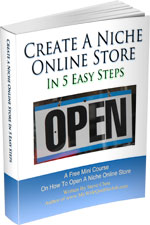
Ready To Get Serious About Starting An Online Business?
If you are really considering starting your own online business, then you have to check out my free mini course on How To Create A Niche Online Store In 5 Easy Steps.
In this 6 day mini course, I reveal the steps that my wife and I took to earn 100 thousand dollars in the span of just a year. Best of all, it's absolutely free!

